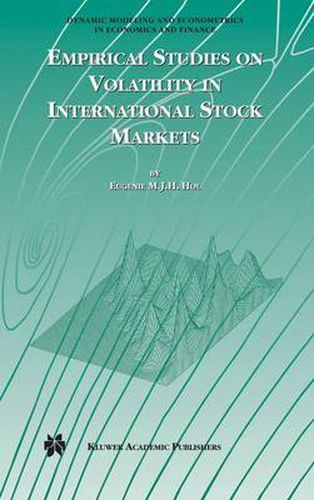Readings Newsletter
Become a Readings Member to make your shopping experience even easier.
Sign in or sign up for free!
You’re not far away from qualifying for FREE standard shipping within Australia
You’ve qualified for FREE standard shipping within Australia
The cart is loading…






This title is printed to order. This book may have been self-published. If so, we cannot guarantee the quality of the content. In the main most books will have gone through the editing process however some may not. We therefore suggest that you be aware of this before ordering this book. If in doubt check either the author or publisher’s details as we are unable to accept any returns unless they are faulty. Please contact us if you have any questions.
Financial market volatility plays a crucial role in financial decision making, as volatility forecasts are important input parameters in areas such as option pricing, hedging strategies, portfolio allocation and Value-at-Risk calculations. The fact that financial innovations arrive at an ever-increasing rate has motivated both academic researchers and practitioners and advances in this field have been considerable. The use of Stochastic Volatility (SV) models is one of the latest developments in this area. This text describes the existing techniques for the measurement and estimation of volatility in international stock markets with emphasis on the SV model and its empirical application. Eugenie Hol develops various extensions of the SV model, which allow for additional variables in both the mean and the variance equation. In addition, the forecasting performance of SV models is compared not only to that of the well-established GARCH model but also to implied volatility and so-called realised volatility models which are based on intraday volatility measures. The intended readers are financial professionals who seek to obtain more accurate volatility forecasts and wish to gain insight about state-of-the-art volatility modelling techniques and their empirical value, and academic researchers and students who are interested in financial market volatility and want to obtain an updated overview of the various methods available in this area.
$9.00 standard shipping within Australia
FREE standard shipping within Australia for orders over $100.00
Express & International shipping calculated at checkout
This title is printed to order. This book may have been self-published. If so, we cannot guarantee the quality of the content. In the main most books will have gone through the editing process however some may not. We therefore suggest that you be aware of this before ordering this book. If in doubt check either the author or publisher’s details as we are unable to accept any returns unless they are faulty. Please contact us if you have any questions.
Financial market volatility plays a crucial role in financial decision making, as volatility forecasts are important input parameters in areas such as option pricing, hedging strategies, portfolio allocation and Value-at-Risk calculations. The fact that financial innovations arrive at an ever-increasing rate has motivated both academic researchers and practitioners and advances in this field have been considerable. The use of Stochastic Volatility (SV) models is one of the latest developments in this area. This text describes the existing techniques for the measurement and estimation of volatility in international stock markets with emphasis on the SV model and its empirical application. Eugenie Hol develops various extensions of the SV model, which allow for additional variables in both the mean and the variance equation. In addition, the forecasting performance of SV models is compared not only to that of the well-established GARCH model but also to implied volatility and so-called realised volatility models which are based on intraday volatility measures. The intended readers are financial professionals who seek to obtain more accurate volatility forecasts and wish to gain insight about state-of-the-art volatility modelling techniques and their empirical value, and academic researchers and students who are interested in financial market volatility and want to obtain an updated overview of the various methods available in this area.